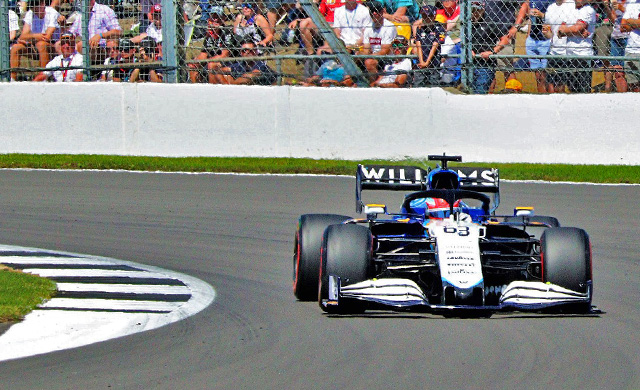Race Car Physics
Physics plays a great deal in the design and technique of driving a racing car.
Why are F1 race cars flat and have such as wide wheel base? It is because the wider the car, the faster it corners.
 F1 car
F1 car When a race car approaches a corner, without some forces applied, the car (and driver) would continue on a straight line (due to inertia). The force must produce a change in direction toward the center of the curve. The type of force that acts perpendicular to the car's velocity is called centripetal force (not centrifugal!). Centripetal force means center-seeking. It acts to change the direction of the car but not the speed.
The centripetal force is provided by the friction between the tires and the track. The force is directly related to the square of the speed of the car. If a car goes too fast, the friction force is not great enough to hold the car in the track.
The centripetal force is also inversely related to the radius of the curve. The bigger the radius of the turning circle, the less force needed to make the curve.
You may notice that the corners of some racing tracks are banked (tilted) toward the center. This is to help friction hold the cars on the track at high speeds.
Related Pages
- Science of Motor Sports
- Racing Technology — how innovation in motorsports drives iInnovation in everyday cars.
- Race Car Technology — the technology behind cutting-edge race cars
- Biomechanics and Physics of Sport
- About Motorsports


 Upcoming Events
Upcoming Events